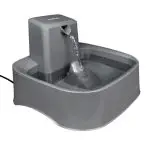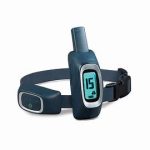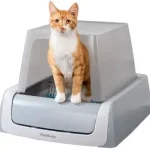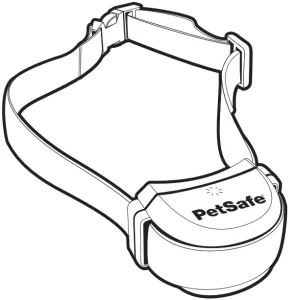

Stay & Play®
Wireless Fence
Receiver Collar for
Stubborn Dog
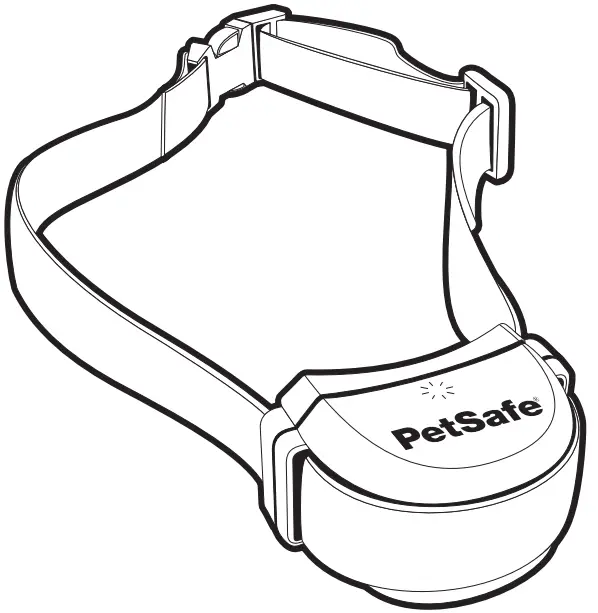
PIF00-13672
Product Manual
PLEASE READ THIS ENTIRE PRODUCT MANUAL BEFORE BEGINNING
Welcome
You and your pet were made for each other. Our aim is to help you have the best companionship and the most memorable moments together. Your new PetSafe ® Stay & Play ® Wireless Fence Receiver Collar for Stubborn Dogs is designed to give your pet maximum
freedom while keeping him safe.
We know that safe pets make happy owners. Before getting started, please take a moment to read through the important safety information. If you have any questions, please don’t hesitate to contact us.
Hereinafter Radio Systems Corporation, Radio Systems PetSafe Europe Ltd., Radio Systems Australia Pty Ltd., and any other affiliate or brand of Radio Systems Corporation may be referred to collectively as “We” or “Us.”
Important Safety Information
Explanation of Attention Words and Symbols used in this product manual
 This is the safety alert symbol. It is used to alert you to potential personal injury hazards. Obey all safety messages that follow this symbol to avoid possible injury or death.
This is the safety alert symbol. It is used to alert you to potential personal injury hazards. Obey all safety messages that follow this symbol to avoid possible injury or death.
 WARNING indicates a hazardous situation that, if not avoided, could result in death or serious injury.
WARNING indicates a hazardous situation that, if not avoided, could result in death or serious injury.
 CAUTION, used with the safety alert symbol, indicates a hazardous situation that, if not avoided, could result in minor or moderate injury.
CAUTION, used with the safety alert symbol, indicates a hazardous situation that, if not avoided, could result in minor or moderate injury.
 CAUTION, used without the safety alert symbol, indicates a hazardous situation that, if not avoided, could result in harm to your pet.
CAUTION, used without the safety alert symbol, indicates a hazardous situation that, if not avoided, could result in harm to your pet.
 NOTICE is used to address safe use practices not related to personal injury.
NOTICE is used to address safe use practices not related to personal injury.

- Not for use with aggressive dogs. Do not use this product if your dog is prone to aggressive behavior. Aggressive dogs can cause severe injury or death to their owners and others. If you are not sure that this product is right for your dog, please talk to your veterinarian or a certified trainer.
- The battery should be charged in areas with temperatures ranging from 32°F to 104°F / 0°C to 40°C. Recharging the battery outside of its temperature range can cause the battery to overheat, explode or catch fire.
- This device contains Lithium-Ion (Li-Ion) batteries; never incinerate, puncture, deform, short-circuit, or charge with an inappropriate charger. Fire, explosion, property damage, or bodily harm may occur if this warning is not followed.
 This product is not a toy. Keep it out of the reach of children.
This product is not a toy. Keep it out of the reach of children.
 This PetSafe® Stay & Play® Wireless Fence for Stubborn Dogs is NOT a solid barrier. The system is designed to act as a deterrent to remind pets y Static Correction to remain in the boundary established. It is important that you reinforce training with your pet on a regular basis. Since the tolerance level to Static Correction varies from pet to pet, Radio Systems Corporation CANNOT guarantee that the system will, in all cases, keep a pet within the established boundary. Not all pets can be trained to avoid crossing the boundary! Therefore, if you have reason to believe that your pet may pose a danger to others or harm himself if he is not kept from crossing the boundaries, you should NOT rely solely upon the PetSafe® Stay & Play® Wireless Fence for Stubborn Dogs to confine your pet. Radio Systems Corporation shall NOT be liable for any property damage, economic loss, or any consequential damages, sustained as a result of any animal crossing the boundary.
This PetSafe® Stay & Play® Wireless Fence for Stubborn Dogs is NOT a solid barrier. The system is designed to act as a deterrent to remind pets y Static Correction to remain in the boundary established. It is important that you reinforce training with your pet on a regular basis. Since the tolerance level to Static Correction varies from pet to pet, Radio Systems Corporation CANNOT guarantee that the system will, in all cases, keep a pet within the established boundary. Not all pets can be trained to avoid crossing the boundary! Therefore, if you have reason to believe that your pet may pose a danger to others or harm himself if he is not kept from crossing the boundaries, you should NOT rely solely upon the PetSafe® Stay & Play® Wireless Fence for Stubborn Dogs to confine your pet. Radio Systems Corporation shall NOT be liable for any property damage, economic loss, or any consequential damages, sustained as a result of any animal crossing the boundary.
 Proper fit of the collar is important. A collar worn for too long or made too tight on the pet’s neck may cause skin damage, ranging from redness to pressure ulcers. This condition is commonly known as bed sores.
Proper fit of the collar is important. A collar worn for too long or made too tight on the pet’s neck may cause skin damage, ranging from redness to pressure ulcers. This condition is commonly known as bed sores.
- Avoid leaving the collar on the dog for more than 12 hours per day.
- When possible reposition the collar on the pet’s neck every 1 to 2 hours.
- Check the fit to prevent excessive pressure; follow the instructions in this manual.
- Never connect a lead to the electronic collar; it will cause excessive pressure on the contacts.
- When using a separate collar for a lead, don’t put pressure on the electronic collar.
- Wash the dog’s neck area and the contacts of the collar weekly with a damp cloth.
- Examine the contact area daily for signs of a rash or a sore.
- If a rash or sore is found, discontinue use of the collar until the skin has healed.
- If the condition persists beyond 48 hours, see your veterinarian.
- For additional information on bed sores and pressure necrosis, please visit our website.
These steps will help keep your pet secure and comfortable. Millions of pets are comfortable while they wear stainless steel contacts. Some pets are sensitive to contact pressure. You may find after some time that your pet is very tolerant of the collar.
If so, you may relax some of these precautions. It is important to continue daily checks of the contact area. If redness or sores are found, discontinue use until the skin has fully healed.
- You may need to trim the hair in the area of the Contact Points. Never shave the dog’s neck; this may lead to a rash or infection.
- Always remove your dog’s Receiver Collar before performing any Transmitter testing.
- The Receiver Collar should not be on your dog when the system is tested. Your pet may receive an unintended correction.
- If you use a collar and leash for training, be sure the extra collar does not put pressure on the contact points.
- Never remove power from the system when the collar is on the pet. This may activate the Receiver Collar.

Do not charge your Receiver Collar every night.
Charging too often can reduce battery life. Charge your Receiver Collar when the Receiver Indicator Light blinks yellow; or when the light blinks red.
How the System Works
The PetSafe® Stay & Play® Wireless Fence for Stubborn Dogs has been proven safe, comfortable, and effective for pets over 5 pounds.
The system works by transmitting a radio signal up to 105 feet in all directions. You temporarily define the Pet Area with Boundary Flags for a visual aid in training your pet. Your pet wears a Receiver Collar with Contact Points that touch his neck, and, once trained, is allowed
to roam freely in the Pet Area. When your pet reaches the Boundary Zone, the Receiver Collar gives a warning tone before delivering a
safe Static Correction through the Contact Points to get his attention until he returns to the Pet Area.
Key Definitions
Receiver Collar: Receives the radio signal from the Transmitter.
Mode Button: Turns Receiver on/off and adjusts the level of Static Correction your pet receives outside the Pet Area.
Receiver Indicator Light: Indicates the level of correction at which the Receiver Collar is set. This light also indicates battery status.
Contact Points: Deliver the safe Static Correction when your pet moves into the Boundary Zone.
Receiver Charger: Charges the batteries inside the Receiver Collar
Receiver Charge Jack: Connection point for charging Receiver battery.
Receiver Collar
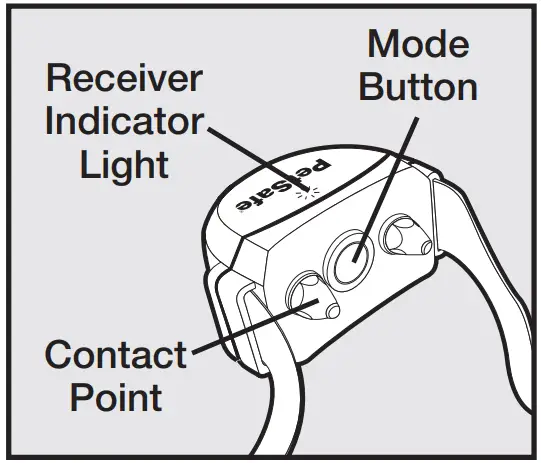
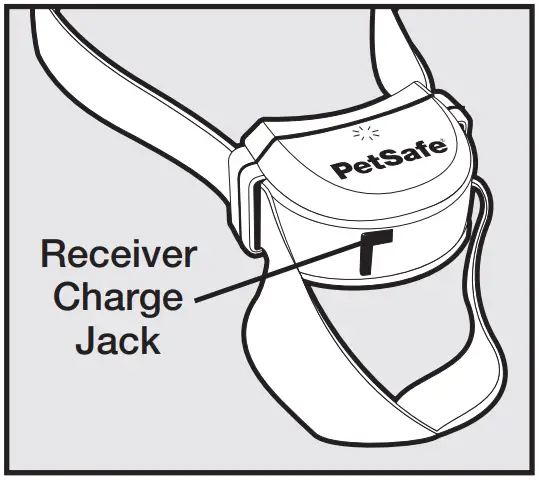
Step 1. Charge the Receiver Collar
The Receiver Collar Charger is designed to plug into a standard AC wall outlet. The Receiver Collar light will glow red when the Receiver Charger is properly seated into the Receiver Charge Jack. The light will turn green when charging is complete. A built-in safety circuit prevents the Receiver Collar from overcharging.
The Receiver Collar will achieve a full charge in 2-3 hours. Each charge can last up to 3 weeks depending upon the frequency of use.
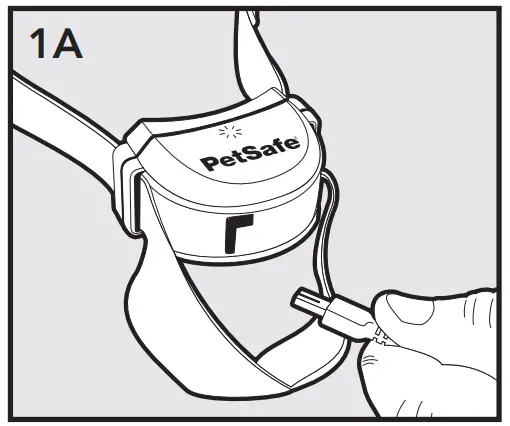

- Do not charge your Receiver Collar every night. Frequent charging can have a negative effect on the battery. We recommend that the Receiver Collar be used until the Receiver Indicator Light blinks yellow or red.
To charge the Receiver Collar, lift and slide the Receiver Collar strap away from the front of the unit (1A). Lift the rubber plug to allow access to the Receiver Charge Jack.
The rubber plug needs to remain attached to the Receiver Collar. Plug the Receiver Charger into the Receiver Charge Jack on the Receiver Collar. The Receiver Charge Jack and Receiver Charger are keyed to fit one way. Do not force it in backward.
Step 2 Prepare the Receiver Collar
Your Receiver Collar comes with Short Contact Points. Use the Long Contact Points for pets with long or thick hair. Tighten the Contact Points using the Contact Point Wrench (2A).
Check tightness weekly.
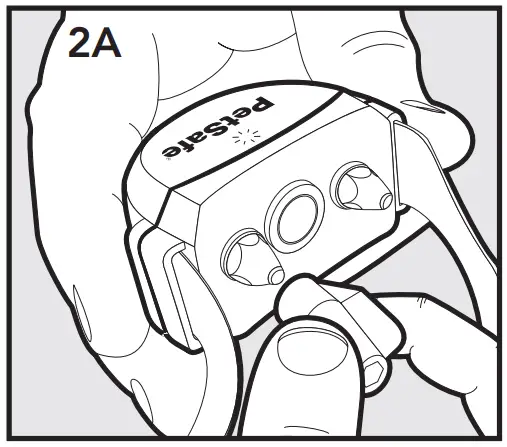
Turning the Receiver Collar ON
Press and hold the Mode Button continuously for 5 seconds (2B). The Green or Yellow or Red Receiver Indicator Light will turn ON for 5 seconds (2C) to indicate battery status, followed by the Red Receiver Indicator Light flashing the Static Correction Level Settings.
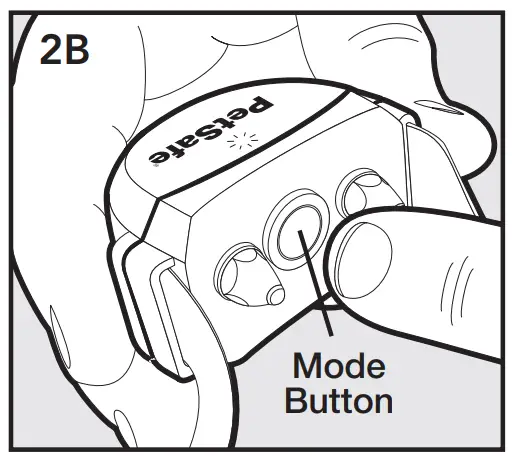
Turning the Receiver Collar OFF
Press and hold the Mode Button continuously for 5 seconds. The Red Receiver Indicator Light will be ON during this time. The Red Receiver Indicator Light will then turn OFF and all Receiver Indicator Lights will stay OFF indicating that the unit is turned OFF.
To extend the time between charging the Receiver Collar, consider turning OFF the Receiver Collar when it is not in use.
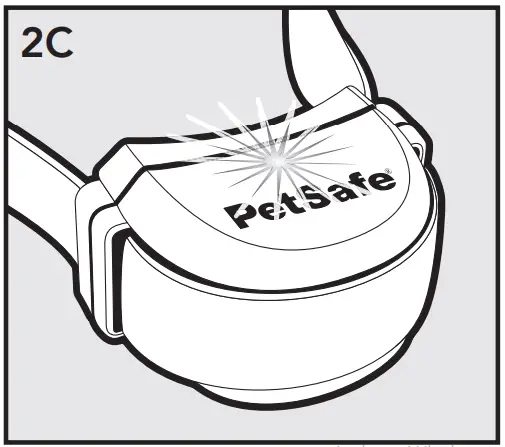
Receiver Collar Status Indicators
The Receiver Collar Status Indicator Light along with the Receiver Collar Alarm Tone is used to determine the battery status and the correction type. Refer to the Receiver Collar Status Indicator Table below to understand the status lights and tones for the Receiver Collar.
During normal operation, the Receiver Collar Indicator Light will flash every 4-5 seconds to indicate the battery status as shown in the table below.
Receiver Collar Status Indicator Table
| Status Light | Alarm Tone | Condition |
While Plugged into Receiver Charger
| Solid red | No tone | Charge in progress |
| Solid green | No tone | Charge complete |
| No light | No tone | Charge failure, contact Customer Care Center |
| After Removing from Receiver Charger | ||
| Continuous green or yellow or red (5 seconds duration) |
No tone | Battery Charge Indication. Occurs immediately after unplugging the charger from the Receiver Collar |
| Operating Battery Status | ||
| Slow blinking green (every 4-5 seconds) | No tone | Collar battery charge 100%-60% |
| Slow blinking yellow (every 4-5 seconds) | No tone | Collar battery charge 60%-20% |
| Slow blinking red (every 4-5 seconds) | No tone | Collar battery charge 20% or less, charge immediately |
| Receiver Activation Status | ||
| Fast pulsating green (3 flashes per second) | Warning tone | Warning tone |
| Fast pulsating red (3 flashes per second) | Tone for
duration of Static Correction |
Static Correction being delivered up to 15 seconds |
| Continuous green (10 seconds) | No tone | Over Correction Protection; collar locked for 10 seconds |
To Set the Static Correction Level
Read all steps before attempting to set the Static Correction Level.
- Press the Mode Button and release (2B) when the Receiver Indicator Light illuminates Red (2C).
- The Receiver Indicator Light will emit a series of Red flashes representing the Static Correction Level.
- Increase the Static Correction Level by pressing and releasing the Mode Button within 5 seconds of the previous series of flashes.
The Static Correction levels increase in strength from 1 to 6. Pushing the Correction Level Button while the Receiver Collar is on level
6 will cause the Receiver Collar to revert to level 1. Refer to the Function and Response Table to choose the Static Correction level
that best fits your pet.
| Function and Response Table | ||
| Indicator Light Response | Static Correction Level | Receiver Collar Function |
| 1 Red Flash | 1 | No Static Correction, Tone Only |
| 2 Red Flashes | 2 | Low Static Correction |
| 3 Red Flashes | 3 | Medium-Low Static Correction |
| 4 Red Flashes | 4 | Medium Static Correction |
| 5 Red Flashes | 5 | Medium-High Static Correction |
| 6 Red Flashes | 6 | High Static Correction |
Over Correction Protection
If your pet enters the Boundary Zone or continues anywhere beyond the Pet Area, this feature limits the Static Correction duration to 15 seconds. While the system locks out further Static Correction, the green light will remain on for 10 seconds.
In the unlikely event that your pet leaves the Pet Area, he will not receive a Static Correction upon return to the Pet Area.
Step 3
Important: The proper fit and placement of your Receiver Collar is important for effective training.
The Contact Points must have direct contact with your pet’s skin on the underside of his neck.
See important safety information on pages 5-7.
To assure a proper fit, please follow these steps:
- Make sure Transmitter is not plugged in, and the receiver is turned off.
- Start with your pet standing comfortably (3A).
- To make it easier to hear the warning beep, place the Receiver Collar on your pet with the logo side of the Receiver facing your pet’s chin.
- Center the Contact Points underneath your pet’s neck, touching the skin.
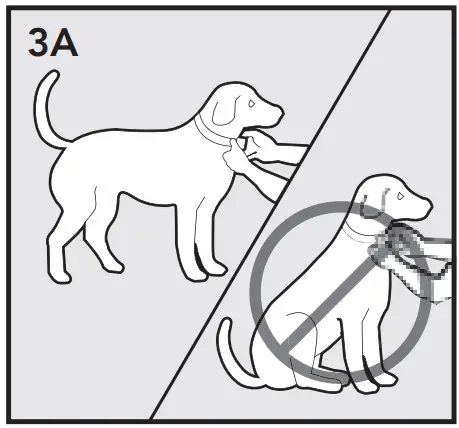
 You may need to trim the hair in the area of the Contact Points. Never shave the dog’s neck; this may lead to a rash or infection.
You may need to trim the hair in the area of the Contact Points. Never shave the dog’s neck; this may lead to a rash or infection. - Check the tightness of the Receiver Collar by inserting one finger between the end of a Contact Point and your pet’s neck. The fit should be snug but not constricting (3B).
Allow your pet to wear the collar for several minutes then recheck the fit. Check the fit again as your pet becomes more comfortable with the Receiver Collar.
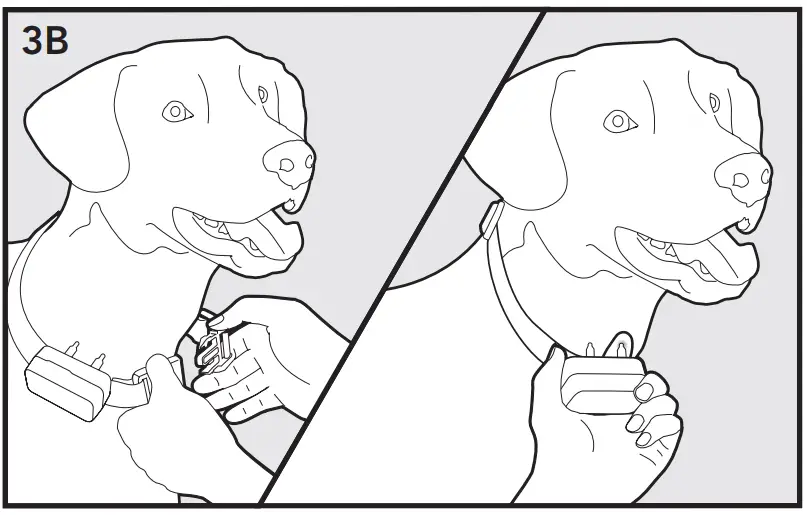
- Trim the collar as follows (3C):
a. Mark the desired length of the Receiver Collar with a pen. Allow for growth if your pet is young or grows a thick winter coat.
b. Remove the Receiver Collar from your pet and cut off the excess.
c. Before placing the Receiver Collar back onto your pet, seal the edge of the cut collar by applying a flame along the frayed edge.
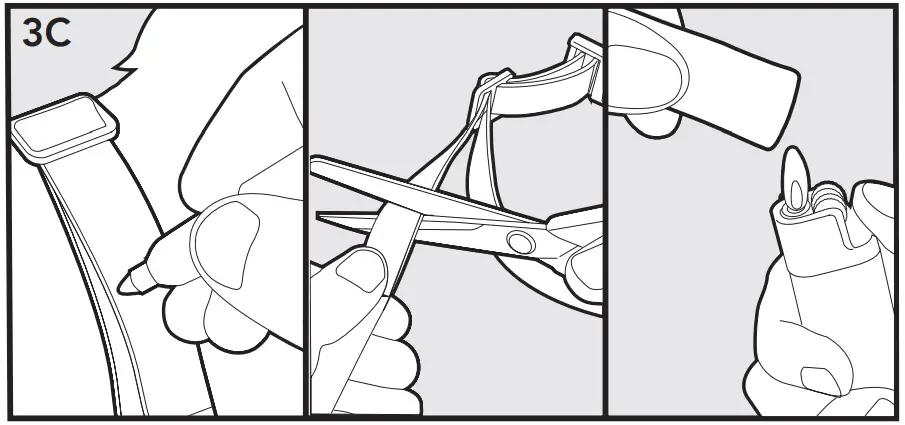
To Re-Thread the Collar
The slide buckle prevents the collar from becoming loose around your pet’s neck.

The ridges must be facing up; the collar will slip if it is not properly threaded.
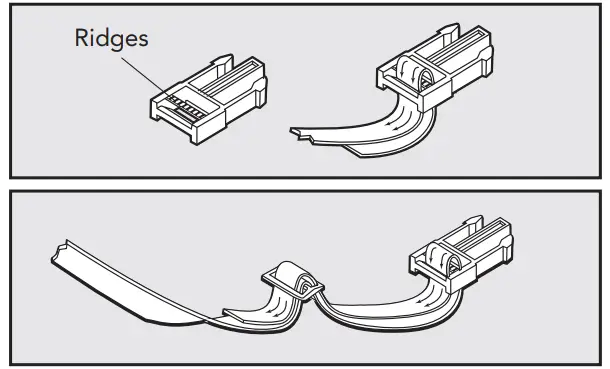
To loosen: Slide the strap through the Slide and Fasten Buckles and pull down.

To tighten: Slide the strap up through the Fasten Buckle and pull through the Slide Buckle

Taking Your Pet Out of the Pet Area
Important: Remove the Receiver Collar and leave it in the Pet Area.
Once your pet learns the Boundary Zone, he will be reluctant to cross it for walks or car rides.
Option 1: Replace the Receiver Collar with a regular collar. Put your pet in a car that is within the Pet Area and drive him out of the Pet Area.
Option 2: Replace the Receiver Collar with a regular collar and leash. Walk your pet out of the Pet Area while giving a command such as “OK” at a specific place of the Boundary Zone (the end of your driveway, sidewalk, etc.). Always leave the Pet Area with a leash at this place and your pet will associate leaving the Pet Area only on a leash, only at this place, and only with a person. You may initially need to convince your pet to leave the Pet Area with a food treat and lots of praise.
Note: You may also carry your pet out of the Pet Area.
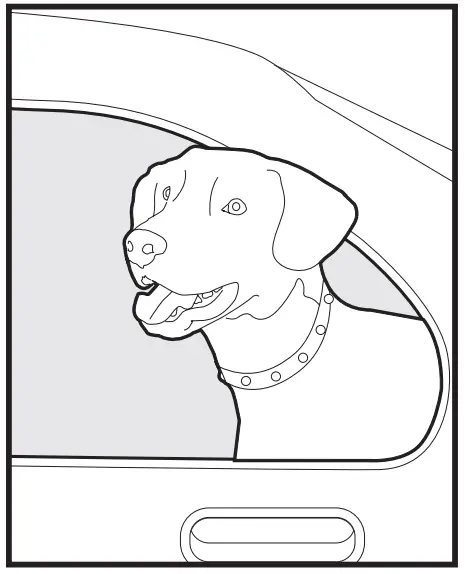
Troubleshooting |
|
| The Receiver Collar is not beeping when setting up the Boundary Zone. |
|
| The Receiver Collaris not beeping or administering a Static Correction. |
|
| The Receiver Collar is beeping everywhere. |
|
| The Receiver Collar is beeping inside the house. |
|
| My pet is receiving a Static Correction in his metal crate. |
|
| The Boundary Zone seems to fluctuate. |
|
| The Receiver Collar activates in the middle of the yard. |
|
| The Receiver Collar is beeping but my pet is not responding to the Static Correction. |
|
| My pet reacts strongly to the Static Correction and has become fearful. |
|
| I was setting up the Pet Area and after I turned down the Boundary Control Dial, the Receiver Collar would no longer beep or correct. |
|
| My next-door neighbor has an In-Ground Containment System and the Receiver dollar does not activate near their property |
|
| The Receiver Collar has injured my pet’s neck. |
|
Test Light Instructions
- Make sure the Receiver Collar Battery is properly charged. Set the Correction Level to 2 or above.
- Hold the Test Light Contacts to the Contact Points.
- Walk toward the Boundary Zone holding the Receiver Collar at your pet’s neck level until the Test Light flashes. Save Test Light for future testing.
Terms of Use and Limitation of Liability
- Terms of Use
The use of this product is subject to your acceptance without modification of the terms, conditions and notices contained with this product. Use of this product implies acceptance of all such terms, conditions, and notices. If you do not wish to accept these terms, conditions, and notices, please return the product, unused, in its original packaging and at your own cost and risk to the relevant Customer Care location together with proof of purchase for a full refund. - Proper Use
Proper Use includes, without limitation, reviewing the entire Product Manual and any specific safety information statements. The specific temperament or size/weight of your pet may not be suitable for this product. If you are unsure whether this product is appropriate for your pet, please consult your veterinarian or certified trainer prior to use. For products used with pets where training is desired, Radio Systems Corporation recommends that these training products are not used if your pet is
aggressive and accepts no liability for determining suitability in
individual cases. - No Unlawful or Prohibited Use
This product is designed for use with pets only. This product is not intended to harm, injure or provoke. Using this product in a way that is not intended could result in a violation of Federal, State or local laws. - Limitation of Liability
In no event shall Radio Systems Corporation or any of its associated companies be liable for (i) any direct, indirect, punitive, incidental, special or consequential damage and/or (ii) any loss or damages whatsoever arising out of or connected with the use or misuse of this product. The Purchaser assumes all risks and liability from the use of this product to the fullest extent permissible by law. - Modification of Terms and Conditions
Radio Systems Corporation reserves the right to change the terms, conditions and notices governing this product from time to time. If such changes have been notified to you prior to your use of this product, they shall be binding on you as if incorporated herein.
Compliance
FCC
This device complies with part 15 of the FCC Rules. Operation is subject to the following two conditions: (1) This device may not cause
harmful interference, and (2) this device must accept any interference received, including interference that may cause undesired operation.
NOTE: This equipment has been tested and found to comply with the limits for a Class B digital device, pursuant to part 15 of the FCC
Rules. These limits are designed to provide reasonable protection against harmful interference in a residential installation. This equipment generates, uses, and can radiate radio frequency energy and, if not installed and used in accordance with the instructions, may cause harmful interference to radio communications. However, there is no guarantee that interference will not occur in a specific installation. If interference does occur to radio or television reception, which can be determined by turning the equipment off and on, the user is encouraged to try to correct the interference by one or more of the following measures:
- Reorient or relocate the receiving antenna.
- Increase the separation between the equipment and the receiver.
- Connect the equipment to an outlet on a circuit different from t at to which the receiver is connected.
- Contact the Customer Care Center at +1 (800) 732-2677.
CAUTION: Modification or changes to this equipment not expressly approved by Radio Systems Corporation may void the user’s authority to operate the equipment.
Australia
This device complies with the applicable EMC requirements specified by the ACMA (Australian Communications and Media Authority).
Customer Care
USA & Canada — Tel: 800-732-2677
Monday – Friday 8 AM – 8 PM / Saturday 9 AM – 5 PM
Australia — Tel: 1800 786 608
Monday – Friday 8:30 AM – 5 PM
New Zealand — Tel: 0800 543 054
Monday – Friday 10:30 AM – 7 PM
Warranty
This product has the benefit of a limited manufacturer’s warranty.
Complete details of the warranty applicable to this Product and its terms can be found at petsafe.com and/or are available by contacting your local Customer Care Center.
Radio Systems Corporation
10427 PetSafe Way
Knoxville, TN 37932
+1 (800) 732-2677
petsafe.com
YU400-1623/2
©2021 Radio Systems Corporation
